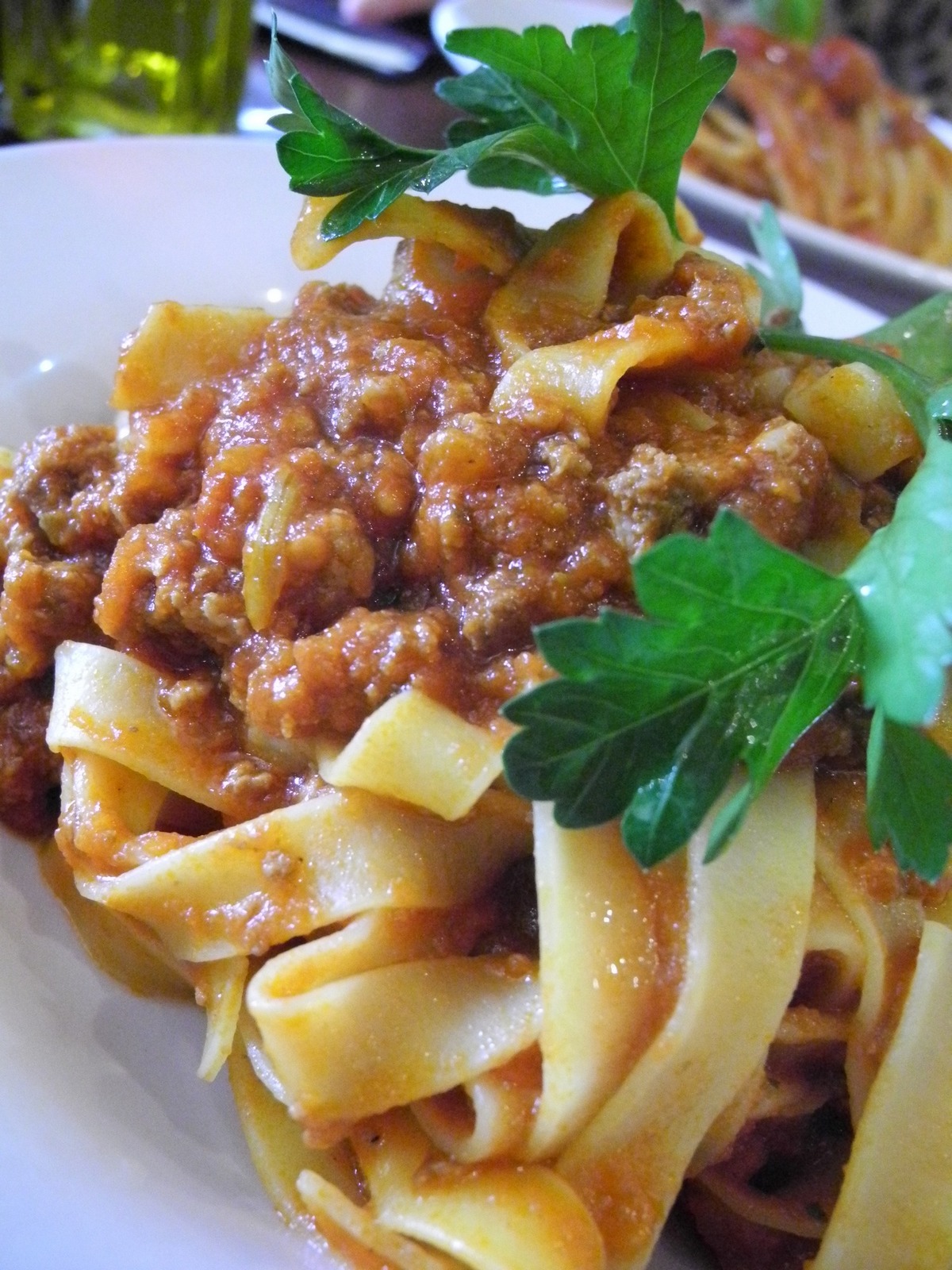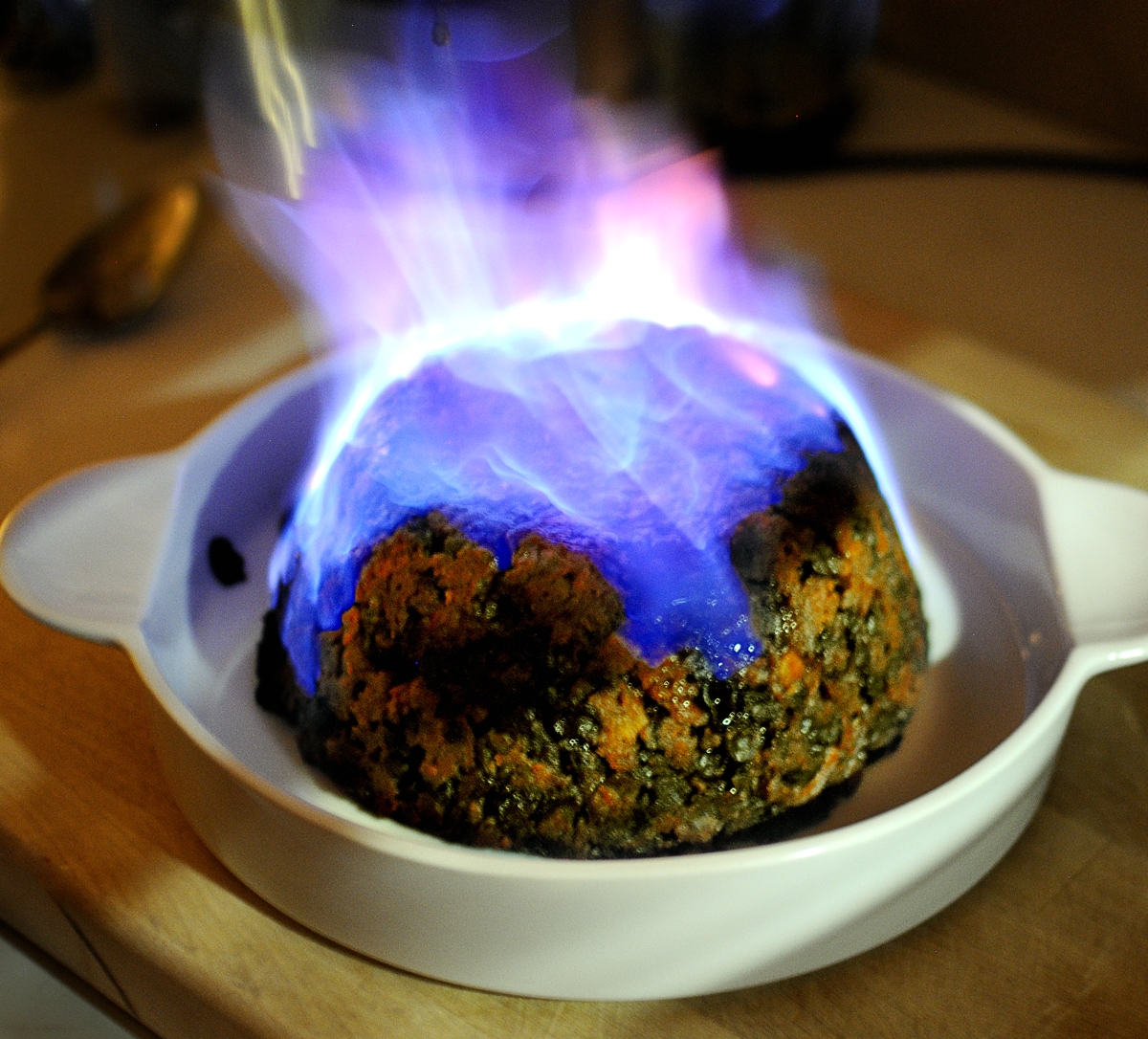I am not a Bolognese Sauce snob, really! Here’s a little crash course on the sauce in question.
There are many ideas on how to make a “proper” Bolognese sauce and the “correct” pasta to be used. Firstly, the sauce is a rather refined and delicate one. However, over time, it has become rather corrupted. What it’s not is a heavy, messy, stogy, tomato based meat sauce ladled over top of possibly spaghetti! In England this has become almost a national dish known as Spag Bol. Hugh Fearnley-Whittingstall, in one of his “River Cottage” cookbooks, has a very good meat sauce recipe for Spaghetti Bolognese that includes salt pork/pancetta or bacon and ground beef, both plum tomatoes and tomato passata, red wine and stock. The only dairy used is either one tablespoon of cream or a knob of butter at the end, just before tossing with the spaghetti and that’s optional. I’ve made this meat-tomato sauce a few times and although it is very good, it’s just not what would be considered “Bolognese Sauce.”
I thought it might be helpful to conduct a bit of research so I tested three recipes. Both Mario Battali’s and Lidia Bastianich’s versions seem to be what the “Designated Official Recipe for Bolognese Sauce” by the Bolognese chapter of the Academia Italiana della Cucina’s requirements are. Bon Appetit’s “Classic Ragu Bolognese”, uses ground beef, ground veal, pancetta, red wine, beef or chicken stock and a bit of tomato paste, as well as the traditional, milk. It has the classic use of three meats and wine, although it’s red wine but again it seems to fall within the designation. Each of these versions are served, as it would and should be to be authentic, with fresh tagliatelle, either homemade or a good purchased product.
In the discussions I’ve had with other people working in the food world on this subject, it’s that when a food item has been called something on a menu and because you know what that item is by the name it’s being called, you expect that dish and not something else. We are not trying to drill down too much, but when I’m ordering spaghetti carbonara it’s not a cream sauce with veggies and bits of bacon or shrimp that I’d be expecting. When it comes to pesto…well that’s an entirely different mortar and pestle. The word “pesto” is the past tense of the Genoese verb “pestare,” which means “to crush.” Because the sauce originated in Liguria with basil, olive oil, pine-nuts and Parmigiano being used, does that mean everything else referred to as pesto isn’t…hmmm…I think that’s best left for another day!
As Jacques Pepin might say….Happy Cooking!
Helpful link to “Official” Bolognese Sauce. And to Food Processor/Stand Mixer Pasta Dough.








I’ve seen all sorts of bastardizations of poor Bolognese. I will say that I’d put my mother’s recipe up against Mario’s or Lidia’s and most definitely Bon Appetit’s any day. 🙂
Great to hear from you Domenica! I know…there are many versions out there! Spag. Bol. is one that cracks me up! It’s just spaghetti with meat sauce! Watched a t.v. show about Bologna the other night…recipe pretty much the same as I found on the Internet. https://www.oracibo.com/recipe/official-bolognese-sauce/ Would love to know more about your mother’s version! I use a combination of meats, some pancetta, white wine and of course the milk, no tomatoes (even Marcella’s recipe has tinned tomatoes), just a bit of tomato paste (the good stuff). On the show from Bologna, both the woman who made the tagliatelle and the butcher warned him…non pomodoro but the chef “cheated” and added a couple of tablespoons of tomato paste anyway!